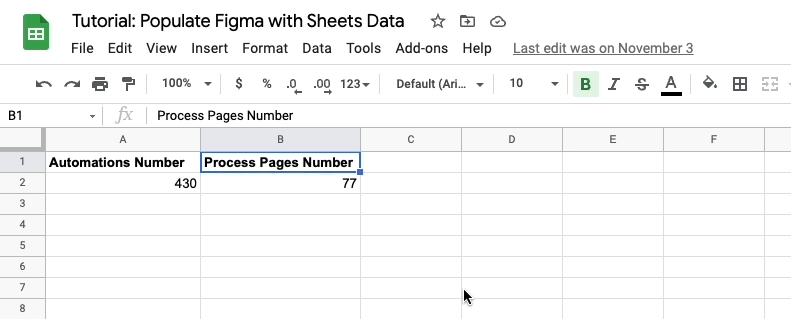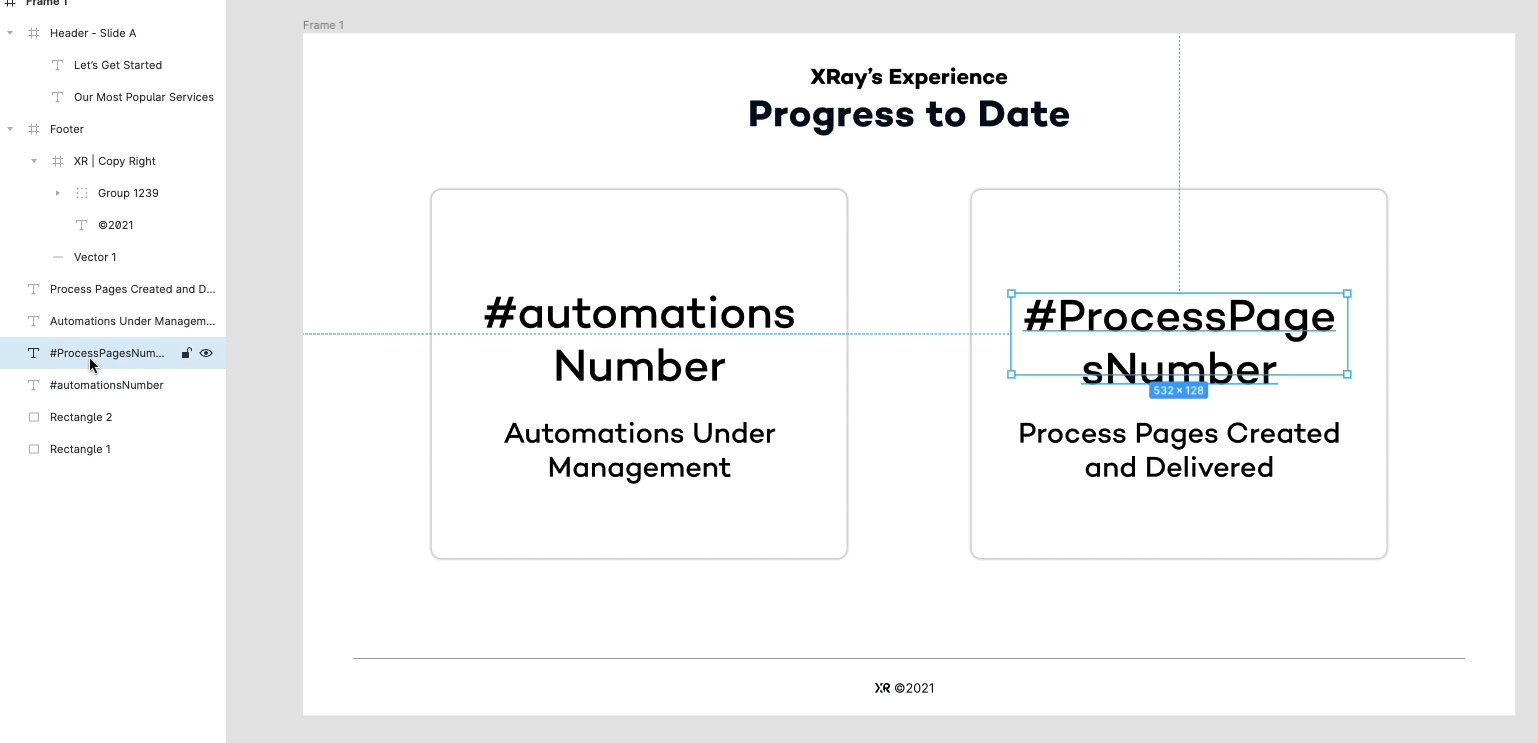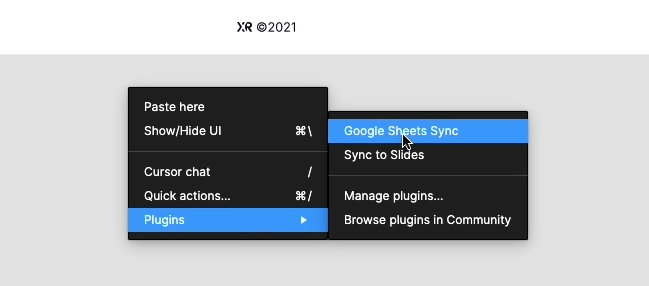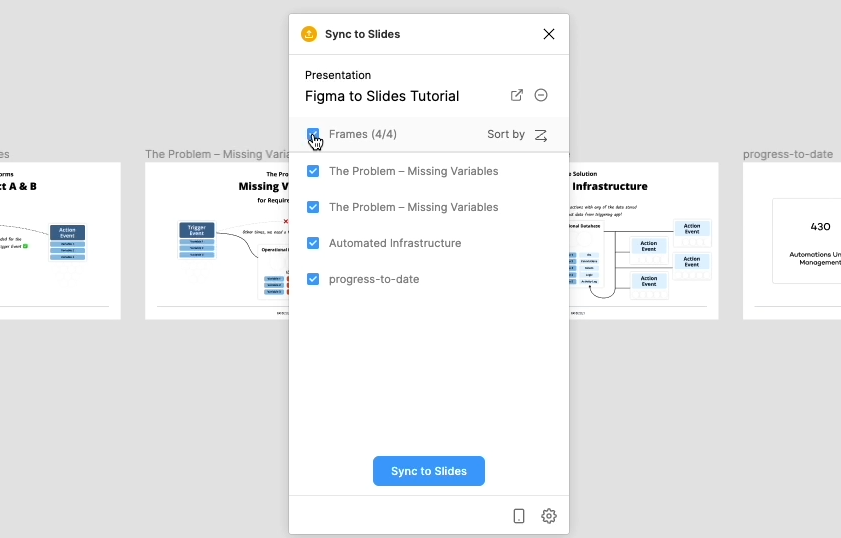Automatically Populate Data and Export Slide Decks in Figma
Free plugins are often a great way to easily improve your workflows and save a little time. In this post, we'll show you a couple Figma plugins that let you populate your designs with data from Google Sheets, or export your designs to Slides in seconds.
December 8, 2021

Automating your workflows doesn’t always require using robust automation platforms like Zapier or Unito. Sometimes, a simple plugin or two is enough to help you save time and work a little more efficiently.
In this post, we’re going to take a look at two plugins for Figma that will help you to create design assets faster and in fewer steps. Both are totally free, and they only take seconds to download and install.
With these plugins, you’ll be able to dynamically populate Figma text layers with content from a Google Sheet, and instantly export your frames into Google Slides presentations.
Google Sheets Sync
First, let’s dive into Google Sheets Sync, a plugin by David Williames. To get started, you can download and install the plugin here.

Once you have the plugin, create a spreadsheet in Google Sheets with a table of the content that you want to use. Make sure to put your titles into the first row of your spreadsheet. The Google Sheets Sync documentation contains additional information for setting up your sheet.

When your sheet is all filled out, click on “Share” to create a shareable link and copy it to your clipboard.

In Figma, rename each text layer that you want to replace with one of the column titles from your sheet. Just remove any spaces, and add a “#” at the beginning of the title. The capitalization of your layer titles doesn’t need to match the capitalization of your Sheets titles. We’ll use camel case in our example, but you can use all lowercase, all caps, or whatever you’d like.

For instance, if your column title in Sheets is “Company Name”, then your Figma layer title should be something like “#companyName”.
Right click on some blank space in Figma to bring up a small menu. Hover over “plugins” and select “Google Sheets Sync” from the list.

You’ll be prompted to enter the Google Sheets link that you copied earlier. Paste it in now, and click on “Fetch and sync.”

You should see the text in your designated layers replaced with content from your Sheets table. This can be a much faster way to fill in large amounts of placeholder text or real data in your designs.
Sync to Slides
Now let’s jump into another helpful Figma plugin, Sync to Slides.

Figma is a powerful digital design tool, but while it’s a great option for building a slide deck, it’s not the best tool for presenting one. You could use the prototype feature to mimic a slide presentation, but it’s much more cumbersome to edit the order of slides than a simple app like Google Slides.
On the other hand, exporting all of your frames one by one and loading them into Slides can also be a frustrating waste of time, especially when you’re regularly making updates to your presentations.
Sync to Slides by Siddhartha Gudipati lets you export your Figma frames to a Slides deck with just a few clicks, making it easy to do your design work in Figma and conduct your presentations with Slides.
You can download and install the plugin for free here.
To start using the plugin, just create a blank Slides presentation and give it an appropriate name. If there’s a blank slide as part of the default template, delete it - you want a completely blank file to work with.
Click on “Share” to get a sharing link. It will need to be set to “everyone with the link can edit”.

Copy the link, and open up Figma. Right click on a blank part of the canvas to bring up a menu. Hover over plugins, and select “Sync to Slides from the list”.
Paste in your Slides link, and select the frames from that page that you want to export. You can also check “All frames” for convenience if you’d like to export everything on the page.

Click the Sync button, and wait a moment for the process to finish. Check your Slides file, and you should see all of your frames exported as images.

Saving time with simple plugins
You don’t always need a complex automation just to save a little time. Simple workflow hacks like installing a useful plugin can also eliminate some robotic work from your daily routine and help you to claim back some time.
These free Figma plugins won’t be saving you hours each week, but they might give you enough time to take an extra coffee break - and sometimes, that’s all you need.
If you’d like to see more tips for streamlining your workflows, be sure to check out our blog or our YouTube channel. You can also follow XRay on Twitter, Facebook, or LinkedIn.





